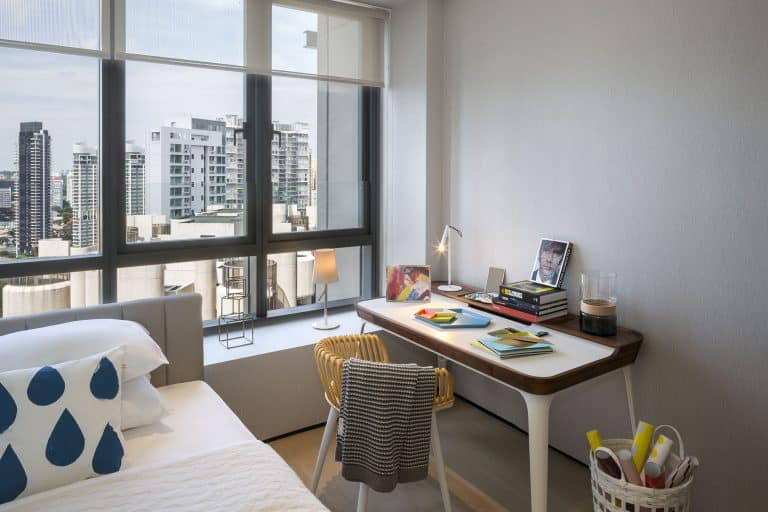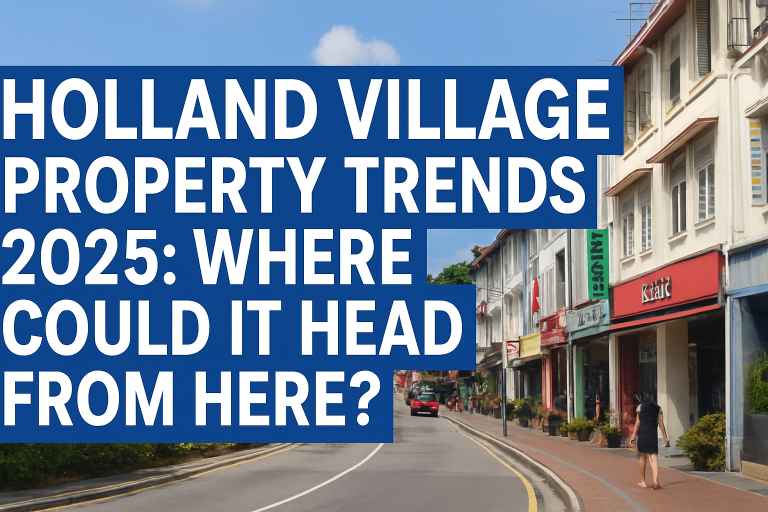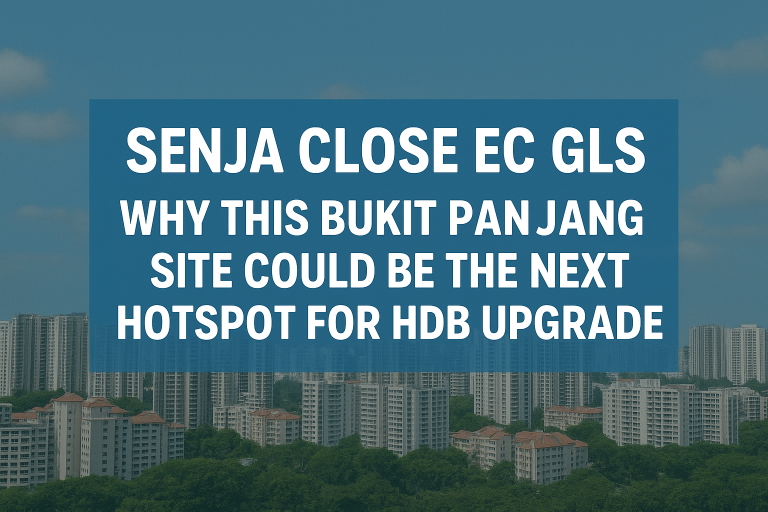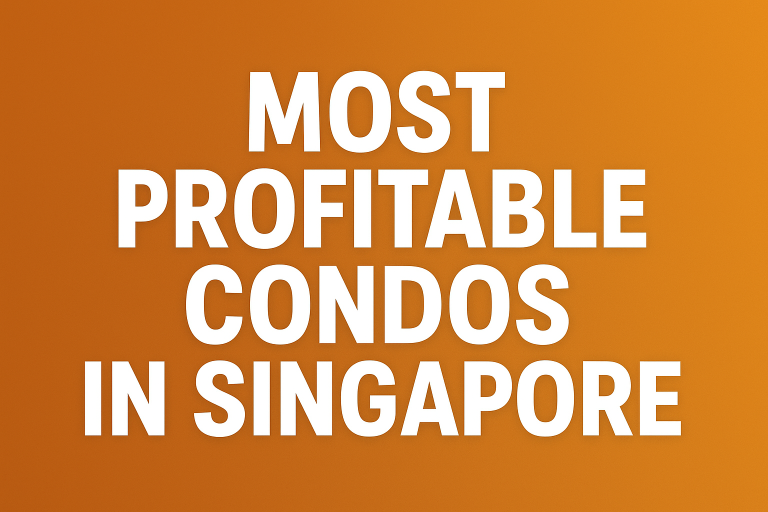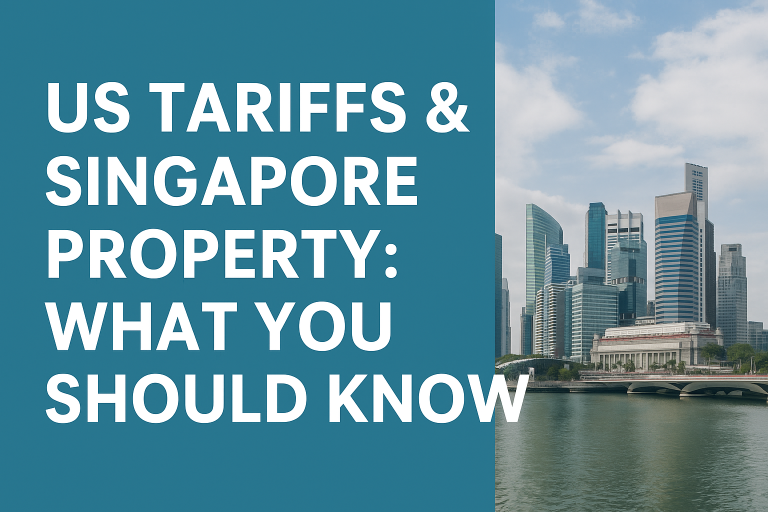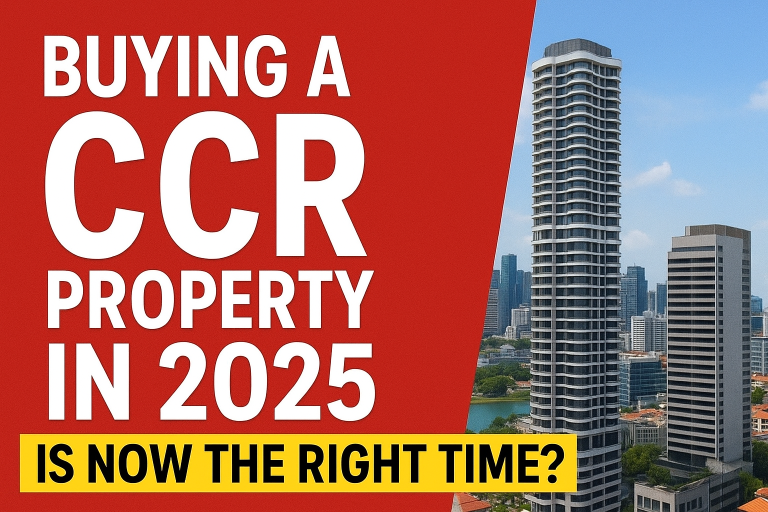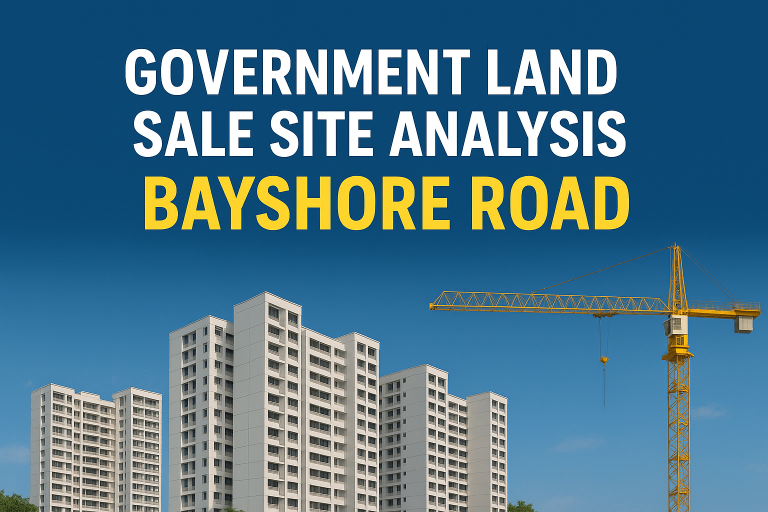U.S. Tariffs & The Singapore Property Market: What You Should Know (FAQ Edition)
1. How does the U.S. trade tariff issue affect Singapore’s property market?
After the U.S. announced an increase in trade tariffs — and China retaliated — global stock markets reacted sharply. Prices fell across the board, though we did see some recovery after the U.S. announced a temporary pause on 9 April.
The ongoing tension between the two biggest economies has definitely added uncertainty to global markets. But here’s the thing — while the stock market swings wildly with every new headline, real estate is a whole different ball game.
Unlike stocks, properties can’t just be bought or sold overnight. Homeowners here tend to hold onto their assets for the long term, so the property market is naturally less volatile. That’s one of the reasons why Singapore’s property market remains relatively steady even when global financial markets get shaky.
2. What impact could the tariffs have in the short term and long term?
While the global outlook remains uncertain, Singapore’s property market is still underpinned by solid fundamentals — strong employment, political stability, and steady demand for housing.
The 10% baseline U.S. tariff might not directly affect Singapore in a big way, but the spillover effects from a prolonged trade war could dampen near-term sentiment and trade activity.
Singapore’s economy is deeply linked to global trade, so we’re not totally shielded. But the good news is, our diversified economy and wide network of trade partners help cushion the blow. Plus, the government has been proactive in supporting long-term growth and job creation — both key factors that sustain housing demand here.
3. Will tariffs drive up construction costs or affect property prices?
Let’s take a step back. If U.S. demand for Chinese building materials drops due to tariffs, China might divert excess supply to the region, making materials cheaper. For example, with China’s property sector slowing down, domestic demand for steel has fallen — prices have already softened.
Combine that with the U.S.’s 145% tariff on Chinese imports, and you’ll likely see even more affordable Chinese steel entering Asia.
Some might think this means cheaper construction costs and therefore cheaper homes — but in Singapore, that’s not quite how it works.
Our property prices are shaped by multiple factors beyond materials — including land costs, labour, professional fees, government taxes (like ABSD and stamp duties), and interest rates. So, while lower material prices may help developers manage costs, it’s unlikely to translate into significantly cheaper home prices.
4. What’s the likely impact on market sentiment?
There’s definitely some nervousness in global markets, and it’s showing in stock prices. But in Singapore’s property scene, things are generally calmer.
Most homebuyers here purchase for genuine reasons — to live in, not to flip for quick profit. So while some buyers might adopt a wait-and-see approach, this sentiment shift tends to be temporary.
The local property market remains steady because of our long-term mindset and resilient fundamentals. Even if global uncertainties persist, Singapore’s market has proven time and again that it can hold its ground.
5. How do tariffs affect foreign investment in Singapore’s residential market?
Singapore’s reputation as a safe, transparent, and stable investment destination continues to attract foreign investors — especially during global uncertainty.
That said, the 60% ABSD rate on foreign buyers will continue to keep overseas demand moderate. But with companies expanding their regional presence here, housing demand from expatriates and PRs is likely to stay healthy.
Developers, too, are sticking to their launch plans. Historically, our market has remained resilient through financial crises, pandemics, and global conflicts — thanks to strong domestic demand and prudent government policies.
Luxury properties also tend to hold up better during global turmoil, as high-net-worth buyers often see Singapore real estate as a wealth preservation tool rather than a speculative play.
6. What about foreign investment in offices or industrial spaces?
In times of uncertainty, Singapore’s strengths — political stability, transparent legal system, and strategic location — shine even brighter.
Commercial and industrial real estate remain attractive to investors seeking a safe haven for long-term capital appreciation. As a key global business hub, foreign direct investment continues to flow in, supporting demand across office and logistics assets.
7. How do cooling measures come into play?
Since 2010, the government has rolled out 13 rounds of cooling measures to ensure home prices grow sustainably. These include the April 2023 tightening, where ABSD for foreign buyers was raised to 60%, and higher duties imposed on second homes to discourage speculation.
Such policies help keep the property market grounded and ensure prices reflect real demand rather than excessive speculation.
Importantly, these measures give the government flexibility — if external shocks like trade wars start affecting the market, policies can be adjusted to maintain stability.
8. How do global trade flows and tariffs indirectly affect Singapore’s economy?
The aggressive tariff hikes by the U.S. could spark further retaliation — for instance, China already imposed a 125% tariff on U.S. goods.
Trade-dependent economies like Singapore could feel the pinch as global supply chains adjust. However, our diversified trade base and the government’s long-term economic planning help buffer against such shocks.
Interestingly, Singapore might even benefit. As global firms look for more stable bases amid trade tensions, Singapore’s “trust factor” could attract more regional headquarters, especially in the logistics and commercial sectors.
9. Can Singapore’s fundamentals buffer against these external risks?
Absolutely. Singapore’s resilience rests on strong fundamentals — stable governance, robust financial systems, world-class infrastructure, and an educated workforce.
We’re also one of the world’s most connected economies, with extensive trade agreements and low unemployment. These factors contribute to sustained economic growth — and by extension, healthy property demand.
10. What’s the mid-term outlook, and what should we watch?
Overall, we remain cautiously optimistic. Singapore’s residential market is well-supported by fundamentals and proactive policy planning.
The government’s pragmatic approach — managing supply, implementing cooling measures, and supporting employment — ensures our market remains stable and investable.
What’s worth monitoring in the months ahead:
Any escalation (or resolution) in the U.S.-China trade dispute
U.S. Federal Reserve’s next moves on interest rates
Changes in borrowing costs that could impact home affordability
If the Fed cuts rates, Singapore’s mortgage rates could follow — a potential upside for both homeowners and investors.
11. Bottom Line:
Global uncertainties come and go, but Singapore’s property market continues to stand on firm ground — built on stability, sound policies, and genuine demand.
Blogs
We think that these articles might be of interest to you or perhaps you might be interested with our latest Singapore Upcoming New Launches list?










